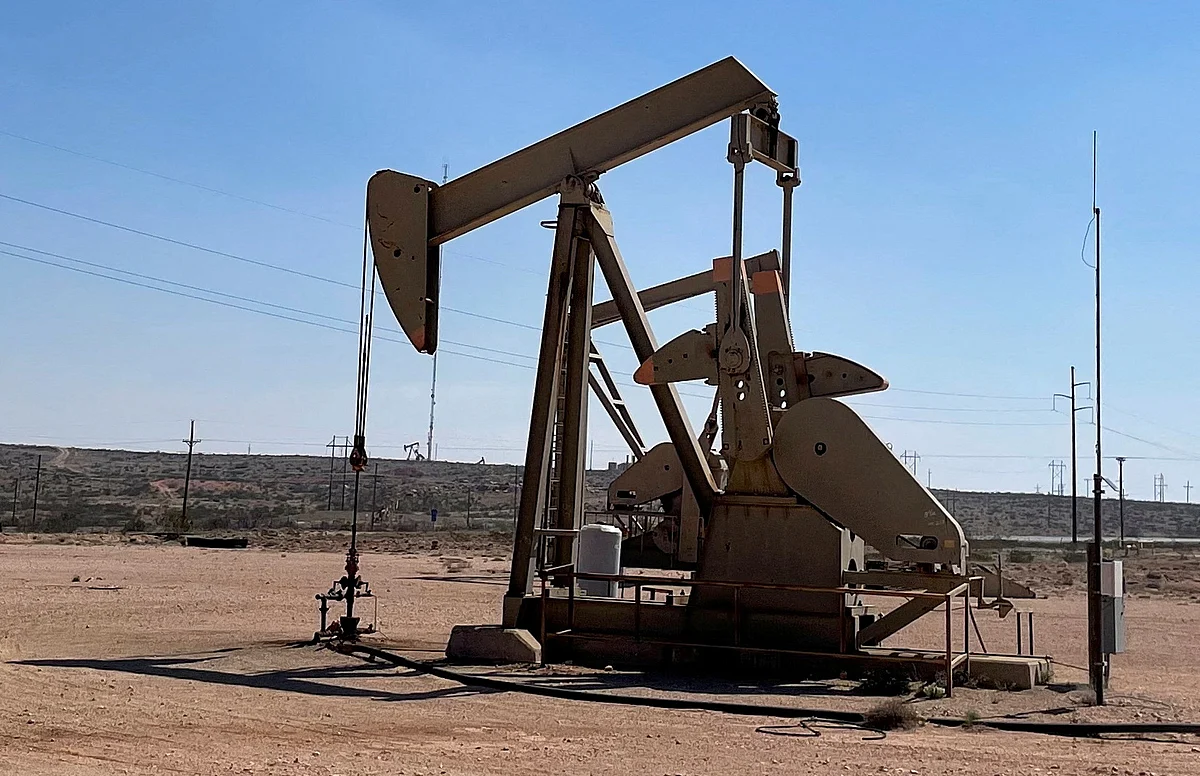Red Queen Dilemma Haunts Oil Market Amid Supply Fragility, Glut Fears
Oil traders are wrestling with one of the most paradoxical markets in years. In the space of two weeks, headlines swung from warnings of oversupply and weak US demand to alarm over the accelerating decline in global oil and gas fields.
For traders, the picture is muddled: near-term signals point to bearish pressure, yet structural weaknesses in supply are stacking up to create bullish risks over the longer horizon.
Recommended For YouThe International Energy Agency has delivered a sharp reversal in tone that underscores this tension. Not long ago, the IEA warned of a“staggering glut” of crude. Now, its latest analysis points to a very different reality: the world's oil and gas fields are declining faster than expected, leaving the sector in a costly battle just to maintain output. Shale oil exemplifies this struggle.
Wells gush in their first year but then deplete rapidly, forcing producers to continually reinvest just to keep production flat. The phenomenon has been dubbed the“Red Queen Syndrome”, after Lewis Carroll's character who must keep running simply to remain in the same place. As IEA chief Fatih Birol put it:“The situation means that the industry has to run much faster just to stand still.”
The shift is stark. The IEA examined data from 15,000 oil and gas fields and concluded that the natural decline rates are accelerating. If companies were to halt investment entirely, global oil production would contract by 5.5 million barrels a day - roughly equivalent to the combined output of Brazil and Norway. Natural gas would see an annual decline of 270 billion cubic metres, up from 180 bcm only a few years ago. Conventional oil fields are now declining at an average rate of 5.6 per cent a year, while conventional gas fields are slipping at 6.8 per cent, according to Reuters.
The US shale sector, once hailed as the swing producer of global markets, looks increasingly fragile under this lens. Shale output would collapse by 35 per cent in the first year if drilling stopped, underscoring its dependence on relentless capital inflows. Already, the signs of strain are visible. Shale jobs dropped 1.7 per cent in August as producers slowed drilling, deferred completions, and cut costs following a 12 per cent slide in oil prices since January. Chevron has announced plans to trim its workforce by 20 per cent, while ConocoPhillips is preparing cuts of up to 25 per cent. Rig activity has also fallen sharply: the US oil-directed rig count has dropped by about 60 rigs this year, with 59 of those losses concentrated in the second quarter.
Producers are consolidating, slashing rigs, and banking on efficiency gains to sustain output, but analysts warn that the decline in rigs and fracking crews will inevitably show up in production numbers within months. Diamondback Energy, one of the shale bellwethers, has already dropped four rigs since the spring and told shareholders it believes US shale oil production has likely peaked at current price levels. The company plans to maintain only 13 to 14 rigs through year-end, far below its activity a year ago.
The fragility of US shale stands in sharp contrast to the relatively slow-declining reserves of the Middle East and Russia, which are set to play an even more dominant role in the global supply mix as legacy fields elsewhere fade. For traders, this concentration adds geopolitical risk to the already volatile oil market.
Meanwhile, demand signals remain soft, creating the paradox that traders face daily. The US Energy Information Administration reported one of the largest weekly crude draws in years, at 9.3 million barrels for the week ending September 12. That brought commercial stockpiles to 415.4 million barrels, 5 per cent below the five-year average. Gasoline inventories fell by 2.3 million barrels, while distillates rose by 4 million. Yet despite these draws, crude prices remained under pressure. Brent traded at $68.41 per barrel mid-week, down nearly $1.70 from the previous week, while West Texas Intermediate slipped by 15 cents to hover below $65. The market remains wary of sluggish US demand, higher product inventories, and concerns over economic growth.
Oil market analysts explained that this juxtaposition - of short-term softness against long-term supply fragility - is the essence of the Red Queen dilemma now haunting oil markets. Producers must sprint to replace lost barrels just to keep output steady, but capital discipline, shareholder pressure, and lower prices are forcing them to slow down. Traders are left to navigate a market where oversupply narratives collide with underinvestment risks, and where the IEA's abrupt pivot underscores just how precarious the balance has become.

Legal Disclaimer:
MENAFN provides the
information “as is” without warranty of any kind. We do not accept
any responsibility or liability for the accuracy, content, images,
videos, licenses, completeness, legality, or reliability of the information
contained in this article. If you have any complaints or copyright
issues related to this article, kindly contact the provider above.
Most popular stories
Market Research

- Kucoin Partners With Golf Icon Adam Scott As Global Brand Ambassador
- Mediafuse Joins Google For Startups Cloud Program To Scale AI-Driven, Industry-Focused PR Distribution
- Solotto Launches As Solana's First-Ever Community-Powered On-Chain Lottery
- 1Inch Unlocks Access To Tokenized Rwas Via Swap API
- Leverage Shares Launches First 3X Single-Stock Etps On HOOD, HIMS, UNH And Others
- Forex Expo Dubai 2025 Returns October 67 With Exclusive Prize Draw Including Jetour X70 FL






















Comments
No comment